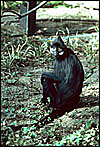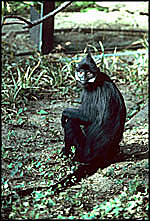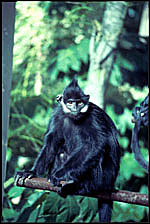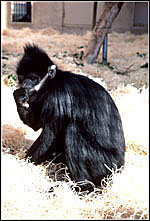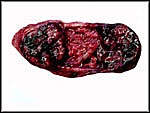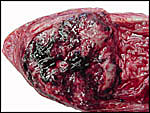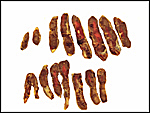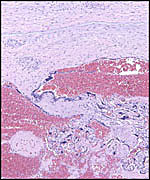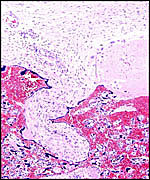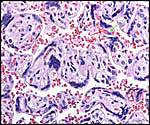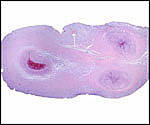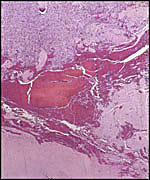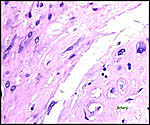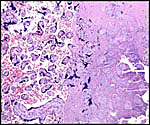| |
16)
Physiologic data
No reproductive physiological studies are known to me, however, the NIH
Medline Service lists many studies on CNS structure.
17)
Other resources
Numerous cell strains from the breeding colony at San Diego Zoo, and some
from Cuc Phuong, Vietnam are deposited in the "Frozen Zoo" at
CRES
and can be made available by contacting Dr Oliver Ryder at oryder@ucsd.edu.
18)
Other remarks - What additional Information is needed?
Because of the severe reduction of leaf-eating primates,
especially in Vietnam, more breeding colonies should be established. Moreover,
since they all have extremely similar placentas and chromosome morphology,
some of the more readily bred species might be considered for effort in
embryo transfer of the least common species, if not cloning from the cells
placed in storage. This also necessitates better knowledge of endocrine
parameters and early implantational stages, perhaps to be ascertained
by ultrasound.
Acknowledgement
The animal photographs in this chapter come from
the Zoological Society of San Diego. I appreciate also very much the help
of the pathologists at the San Diego Zoo.
References
Benirschke,
K. and Kaufmann, P.: The Pathology of the Human Placenta, 4th ed. Springer-Verlag,
NY, 2000.
Benirschke,
K. and Miller, C.J.: Anatomical and functional differences in the placenta
of primates. Biol. Reprod. 26:2-53, 1982.
Burton,
G.J.: Early placentation in the dusky leaf monkey (Presbytis obscura).
Placenta 1:187-195, 1980.
Nadler,
T.: Zur Haltung von Delacour-und Tonkinlanguren (Trachypithecus delacouri
und Trachypithecus francoisi) im Gebiet ihres natuerlichen Lebensraumes.
Zool. Garten 64:379-398, 1994.
Nadler,
T.: Verbreitung und Status von Delacour-, Tonkin- und Goldschopflanguren
(Trachypithecus delacouri, Trachypithecus francoisi und Trachypithecus
poliocephalus) in Vietnam. Zool. Garten 66:1-12, 1996.
Nai,
W.H., Liu, RQ., Chen,Y.Z. and Wang, J.H.: Chromosome homologies between
human and Francois' monkey (Semnopithecus francoisi) established by chromosome
painting. Y Chuan Bao 26:474-479, 1999. (In Chinese).
Nowak,
R.M.: Walker's Mammals of the World. 6th ed. The Johns Hopkins Press,
Baltimore, 1999.
Robinson, R.: Breeding and management of Francois's langurs at Belfast zoo. Int. Zoo News 51:200-208, 2004.
Selenka,
E.: Zur vergleichenden Keimesgeschichte der Primaten. Studien über
Entwicklungsgeschichte der Tiere. Heft 10. Menschenaffen, L.5, pp. 329-372,
F. Keibel, Wiesbaden, 1903.
Streicher,
U.: Health problems in confiscated leaf eating monkeys. Verh. Ber. Erkg.
Zootiere 40:207-211, 2001 (Meeting in Rotterdam).
|
